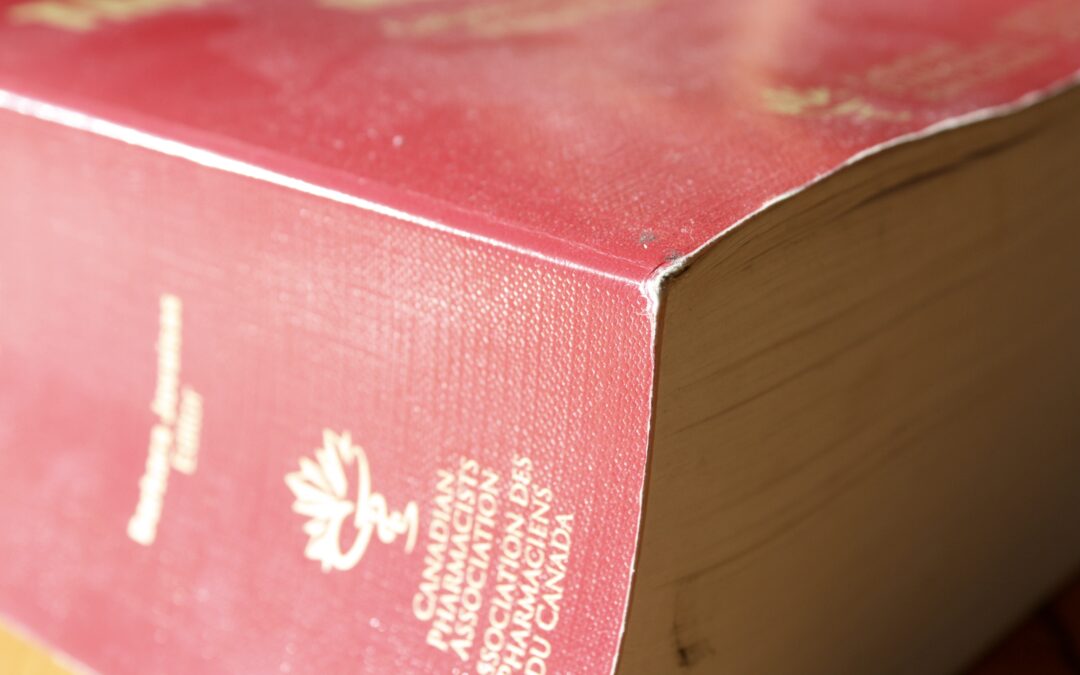
by Dr. Talia Marcheggiani, ND | Jan 7, 2016 | Asian Medicine, Book, Book Review, Diet, Docere, Education, Evidence Based Medicine, Exams, Healing Stories, Health, Medicine, Narrative Therapy, Naturopathic Philosophy, Naturopathic Principles, Philosophy
 A singular narrative is told and retold regarding medicine in the west. The story goes roughly like this: the brightest students are accepted into medical schools where they learn—mainly through memorization—anatomy, physiology, pathology, diagnostics, microbiology, and the other “ologies” to do with the human physique. They then become doctors. These doctors then choose a specialty, often associated with a specific organ system (dermatology) or group of people (pediatrics), who they will concentrate their knowledge on. The majority of the study that these doctors undergo concerns itself with establishing a diagnosis, i.e.: producing a label, for the patient’s condition. Once a diagnosis has been established, selecting a treatment becomes standardized, outlined often in a cookbook-like approach through guidelines that have been established by fellow doctors and pharmaceutical research.
A singular narrative is told and retold regarding medicine in the west. The story goes roughly like this: the brightest students are accepted into medical schools where they learn—mainly through memorization—anatomy, physiology, pathology, diagnostics, microbiology, and the other “ologies” to do with the human physique. They then become doctors. These doctors then choose a specialty, often associated with a specific organ system (dermatology) or group of people (pediatrics), who they will concentrate their knowledge on. The majority of the study that these doctors undergo concerns itself with establishing a diagnosis, i.e.: producing a label, for the patient’s condition. Once a diagnosis has been established, selecting a treatment becomes standardized, outlined often in a cookbook-like approach through guidelines that have been established by fellow doctors and pharmaceutical research.
The treatment that conventional doctors prescribe has its own single story line involving substances, “drugs”, that powerfully over-ride the natural physiology of the body. These substances alter the body’s processes to make them “behave” in acceptable ways: is the body sending pain signals? Shut them down. Acid from the stomach creeping into the esophagus? Turn off the acid. The effectiveness of such drugs are tested against identified variables, such as placebo, to establish a cause and effect relationship between the drug and the result it produces in people. Oftentimes the drug doesn’t work and then a new one must be tried. Sometimes several drugs are tried at once. Some people get better. Some do not. When the list is exhausted, or a diagnosis cannot be established, people are chucked from the system. This is often where the story ends. Oftentimes the ending is not a happy one.
On July 1st, naturopathic doctors moved under the Regulated Health Professionals Act in the province of Ontario. We received the right to put “doctor” on our websites and to order labs without a physician signing off on them. However, we lost the right to inject, prescribe vitamin D over 1000 IU and other mainstay therapies we’d been trained in and been practicing safely for years, without submitting to a prescribing exam by the Canadian Pharmacists Association. Naturopathic doctors could not sit at the table with the other regulated health professions in the province until we proved we could reproduce the dominant story of western medicine—this test would ensure we had.
Never mind that this dominant story wasn’t a story about our lives or the medicine we practice—nowhere in the pages of the texts we were to read was the word “heal” mentioned. Nowhere in those pages was there an acknowledgement about the philosophy of our own medicine, a respect towards the body’s own self-healing mechanisms and the role nature has to play in facilitating that healing process. It was irrelevant that the vast majority of this story left out our years of clinical experience. The fact that we already knew a large part of the dominant story, as do the majority of the public, was set aside as well. We were to take a prescribing course and learn how primary care doctors (general practitioners, family doctors and pediatricians), prescribe drugs. We were to read accounts of the “ineffectiveness” of our own therapies in the pages of this narrative. This would heavy-handedly dismiss the experience of the millions of people around the world who turn to alternative medicine every year and experience success.
We were assured that there were no direct biases or conflict of interests (no one was directly being paid by the companies who manufacture these drugs). However, we forget that to have one story is to be inherently and dangerously biased. Whatever the dominant story is, it strongly implies that there is one “truth” that it is known and that it is possessed by the people who tell and retell it. Other stories are silenced. (Author Chimamanda Ngozi Adichie describes this phenomenon in her compelling TED Talk, “The Danger of a Single Story”).
Despite the time and money it cost me, taking the prescribing course afforded me an opportunity to step outside of the discouraging, dominant story of the standard medical model and thicken the subordinate stories that permeate the natural and alternative healing modalities. These stories began thousands of years ago, in India and in China, at the very root of medicine itself. They have formed native ancestral traditions and kept entire populations and societies alive and thriving for millennia. Because our stories are not being told as often, or told in the context of “second options” or “last resorts”, when the dominant narratives seem to fail us, the people who tell them run the risk of being marginalized or labeled “pseudoscientific.” These dismissals, however, tell us less about The Truth and more about the rigid simplicity of the singular story of the medical model.
It is frightening to fathom that our body, a product of nature itself, encompasses mysteries that are possibly beyond the realm of our capacity for understanding. It’s horrifying to stand in a place of acknowledgement of our own lack of power against nature, at the inevitability of our own mortality. However, if we refuse to acknowledge these truths, we close ourselves off to entire systems that can teach us to truly heal ourselves, to work with the body’s wisdom and to embrace the forces of nature that surround us. The stories that follow are not capital T truths, however, they can enrich the singular story that we in the west have perpetuated for so long surrounding healing.
The body cannot be separated into systems. Rather than separating depression and diarrhea into psychiatry and gastroenterology, respectively, natural medicine acknowledges the interconnectivity between the body’s systems, none of which exist in a vacuum. When one system is artificially manipulated, others are affected. Likewise, an illness in one system may result in symptoms in another. There have been years of documentation about the gut-brain connection, which the medical model has largely ignored when it comes to treatment. The body’s processes are intricately woven together; tug on one loose thread and the rest either tightens or unravels.
We, as products of nature, may never achieve dominion over it. Pharmaceutical drugs powerfully alter the body’s natural physiology, often overriding it. Since these drugs are largely manmade, isolated from whole plants or synthesized in a lab, they are not compounds found naturally. Despite massive advances in science, there are oceans of what we don’t know. Many of these things fit into the realm of “we don’t know what we don’t know”—we lack the knowledge sufficient to even ask the right questions. Perhaps we are too complex to ever truly understand how we are made. Ian Stewart once wrote, “If our brains were simple enough for us to understand them, then we’d be so simple that we couldn’t.” And yet, accepting this fact, we synthesize chemicals that alter single neurotransmitters, disrupting our brain chemistry, based on our assumption that some people are born in need of “correcting” and we have knowledge of how to go about this corrective process. Such is the arrogance of the medical model.
There are always more than two variables in stories of disease and yet the best studies, the studies that dictate our knowledge, are done with two variables: the drug and its measured outcome. Does acetaminophen decrease pain in patients with arthritis when compared to placebo? A criticism of studies involving natural medicine is that there are too many variables—more than one substance is prescribed, the therapeutic relationship and lifestyle changes exert other effects, a population of patients who value their health are different than those who do not, the clinical experience is more attentive, and so on. With so many things going on, how can we ever know what is producing the effect? However, medicine is limited in effect if we restrict ourselves to the prescription of just one thing. This true in herbalism, where synergy in whole plants offers a greater effect than the sum of their isolated parts. By isolating a single compound from a plant, science shows us that we may miss out on powerful healing effects. Like us, plants have evolved to survive and thrive in nature; their DNA contains wisdom of its own. Stripping the plant down to one chemical is like diluting all of humanity down to a kidney. There is a complexity to nature that we may never understand with our single-minded blinders on.
Studies are conducted over the periods of weeks and, rarely, months, but very rarely are studies done over years or lifetimes. Therefore, we often look for fast results more than signs of healing. This is unfortunate because, just as it takes time to get sick, it takes time to heal. I repeat the previous sentence like a mantra so patients who have been indoctrinated into a medical system that produces rapid results can reset expectations about how soon they will see changes. Sometimes a Band-Aid is an acceptable therapy; few of us can take long, hard looks at our lives and begin an often painful journey in uncovering what hidden thought process or lifestyle choices may be contributing to the symptoms we’re experiencing. However, the option of real healing should be offered to those who are ready and willing.
When we study large masses of people, we forget about individuality. When we start at the grassroots level working with patients on the individual level, we familiarize ourselves with their stories, what healing means to them. In science, large studies are favoured over small ones. However, in studies of thousands of people, singular voices and experiences are drowned out. We lose the eccentric individualities of each person, their genetic variability, their personalities, their preferences and their past experiences. We realize that not everyone fits into a diagnostic category and yet still suffers. We realize that not everyone gets better with the standard treatments and the standard dosages. Starting at the level of the individual enables a clinician to search for methods and treatments and protocols that benefit each patient, rather than fitting individuals into a top-down approach that leaves many people left out of the system to suffer in silence.
It is important to ask the question, “why is this happening?” The root cause of disease, which naturopathic medicine claims to treat is not always evident and sometimes not always treatable. However, the willingness to ask the question and manipulate the circumstances that led to illness in the first place is the first step to true and lasting healing; everything else is merely a band-aid solution, potentially weakening the body’s vitality over time. No drug or medical intervention is a worthy substitute for clean air, fresh abundant water, nutritious food, fulfilling work and social relationships, a connection to a higher purpose, power or philosophy and, of course, good old regular movement. The framework for good health must be established before anything else can hope to have an effect.
The system of naturopathic medicine parallels in many ways the system of conventional pharmaceutical-based medicine. We both value science, we both strive to understand what we can about the body and we value knowledge unpolluted by confusing variables or half-truths. However, there are stark differences in the healing philosophies that can’t be compared. These differences strengthen us and provide patients with choice, rather than threatening the establishment. The time spent with patients, the principles of aiming for healing the root cause and working with individuals, rather than large groups, offer a complement to a system that often leaves people out.
There are as many stories of healing and medicine as there are patients. Anyone who has ever consulted a healthcare practitioner, taken a medicine or soothed a cold with lemon and honey, has experienced some kind of healing and has begun to form a narrative about their experience. Anyone with a body has an experience of illness, healing or having been healed. Those of us who practice medicine have our own experience about what works, what heals and what science and tradition can offer us in the practice of our work. Medicine contains in its vessel millions of stories: stories of doubt, hopelessness, healing, practitioner burnout, cruises paid for my pharmaceutical companies, scientific studies, bias, miracle cures, promise, hope and, most of all, a desire to enrich knowledge and uncover truth. Through collecting these stories and honouring each one of them as little truth droplets in the greater ocean of understanding, we will be able to deepen our appreciation for the mystery of the bodies we inhabit, learn how to thrive within them and understand how to help those who suffer inside of them, preferably not in silence.
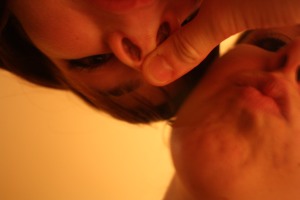
by Dr. Talia Marcheggiani, ND | Oct 6, 2014 | Canadian College of Naturopathic Medicine, Exams, NPLEX

The weekend before the Big Week is a time for serious contemplation.
1) Stimulate your Liver Qi. Embarrass yourself at grad formal. Have them reprint your award with the same word misspelled. Create an online dating profile. Get a day job and surround yourself by a species of human that is still trying to figure out what gluten is. Feel smugly superior and remember what this feels like: it won’t last.
2) Address the difference between neediness and having needs in relationships. Learn astrology.
3) Buy a $200 book that weighs more than you do and makes you feel legitimized by the medical profession. Carry it around as a cute accessory. Spill things on it so it looks used.
(more…)

by Dr. Talia Marcheggiani, ND | Aug 4, 2014 | Canadian College of Naturopathic Medicine, Exams, Health, NPLEX, Robert Schad Naturopathic Clinic, Student, Summer

We are recycled star dust
That reshapes our entire body every 7 years.
Which means I’m just about finished with my 4th body.
And when I stare at the night sky, I might be looking at body number 5
Or reminiscing with the previous 3.
(more…)
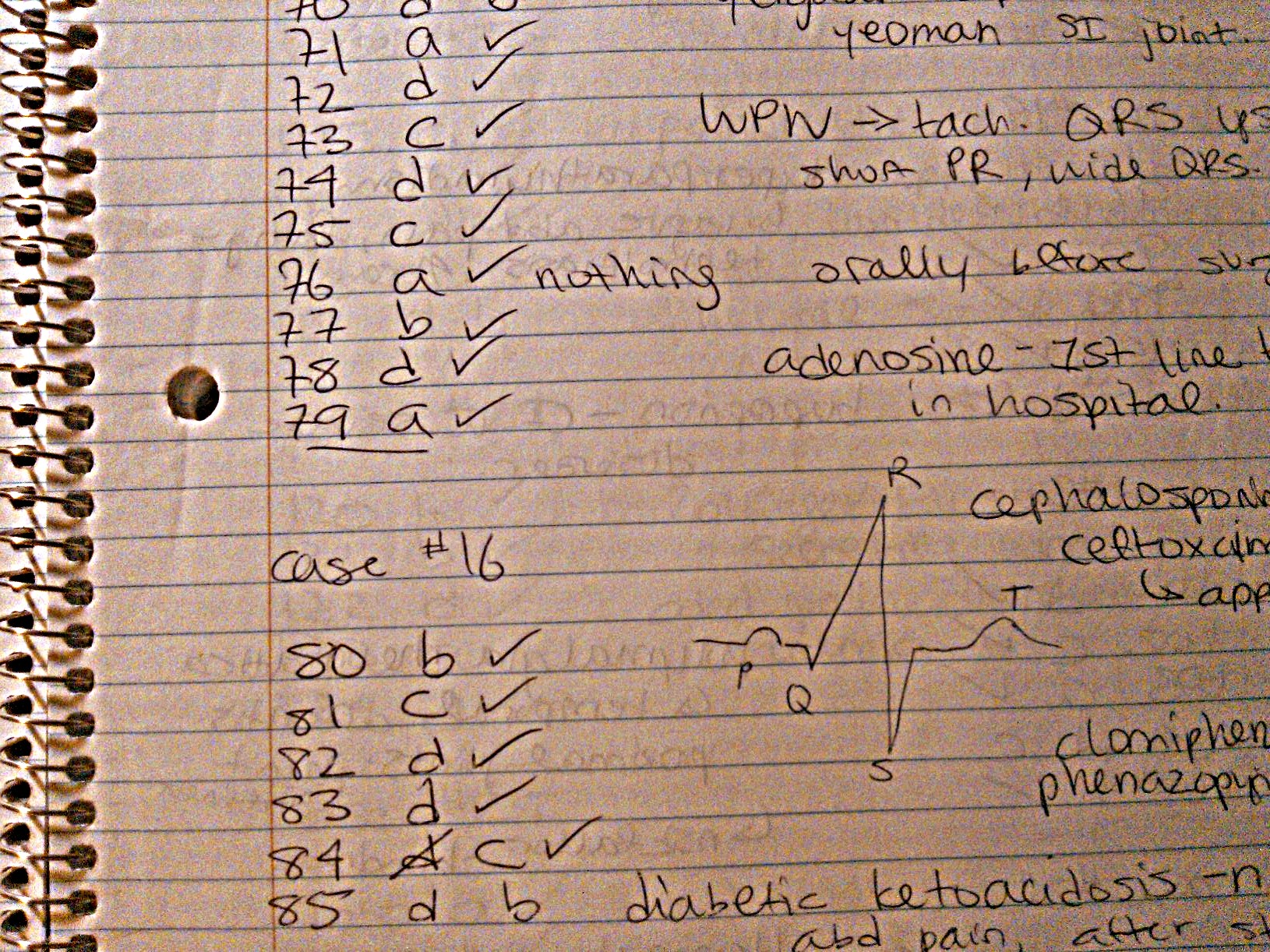
by Dr. Talia Marcheggiani, ND | Jul 24, 2014 | Canadian College of Naturopathic Medicine, Exams, NPLEX, Robert Schad Naturopathic Clinic, Writing

Nalexone or naproxen: one’s an NSAID. After a month, they’re not straight in my head.
Porphyria is different from diphtheria. Now who can remember which diagnostic criteria includes
Left shifts? Or is it left shunts? And what’s that condition where the intestinal villi blunt?
Emergent conditions and therapeutic nutrition leave little room for healer intuition. I wish I was dating an
X-ray technician. With less than
2 weeks to go, we’re left counting the hours. It’s been a while since I’ve had a shower. I wonder if there is a botanical flower that will give me superhuman studying power?
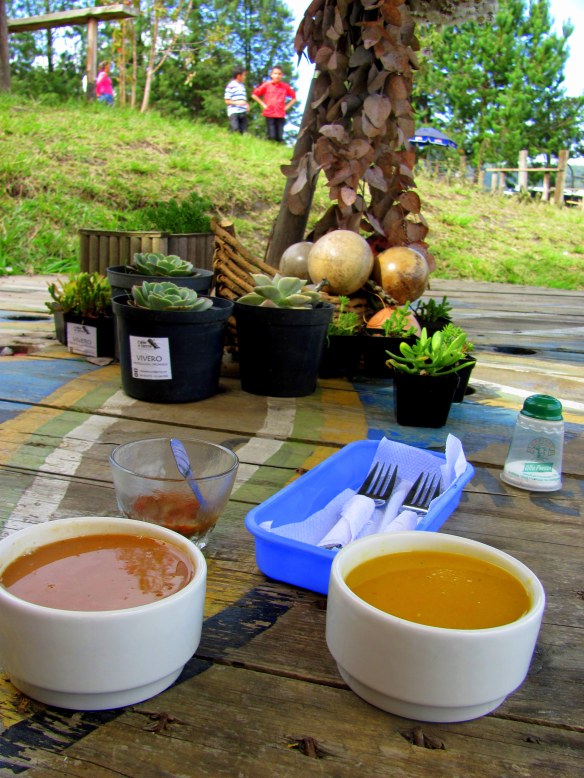
by Dr. Talia Marcheggiani, ND | Sep 30, 2013 | Asian Medicine, Detoxification, Digestion, Exams, Food, Health, Mindfulness, Traditional Chinese Medicine

In Traditional Chinese Medicine, the Spleen organ can be more closely equated with the pancreas, rather than the western spleen, whose main function is simply to store blood. The TCM Spleen is responsible for digesting food and converting it into energy, much in the way the pancreas releases insulin to allow the body’s cells to absorb ingested glucose, providing the cells with energy. Unlike the pancreas, however, the TCM Spleen is also responsible for providing warmth and vitality to the body, providing energy for immune function and the mental energy to produce industrious and creativity work. The Spleen belongs to the Earth Element and its main season is late Summer and early Fall, right around the time that students dust off their backpacks and head back to school.
(more…)

by Dr. Talia Marcheggiani, ND | May 6, 2013 | Canadian College of Naturopathic Medicine, Exams, NPLEX, Stress, Student
Congratulations on another completed academic year! Not to rain on everyone’s parade but, for many of you, there is a giant basic sciences board exam looming in the not-so distant future. So, there are websites out there on tips for studying for NPLEX 1, but they are annoyingly vague. I remember looking at said sites, and felt like grabbing whoever put the sites together, taking them by the shoulders and giving them a good shake yelling, “just tell me what to do!” I’m going to try to deliver that. But, I can’t offer any guarantees. Every year, NPLEX is different, with a different random focus. Some years it’s crazy hard, some years CCNM students do really well, other years the questions seem to be obsessed with biochemistry. I can only be candid about my own study strategy and what worked for me, attaching real-life experience to the wonders of a standardized board licensing exam.
I don’t know about anyone else, but naturopathic medical school exam schedules have brought out my inner crammer. It’s gotten to the point where I can’t study for anything unless I know that there is a final the next day. And even then… So, when faced with the prospect of 3 months to study for 2+ years of cumulative material, I had no idea where to start. I’d never done anything like that before and had no idea how I’d pull it off. Luckily I managed to. Here’s how.
1) Take the month of May off. Work, travel, take an NPLEX course if you think you have to (I didn’t), sit on a patio with a beer every day, or sit in front of your books, twiddling your thumbs wondering how you’re going to work up the courage to do this. Just don’t open those books. Not yet. May is yours. Let the last 2 years ebb and flow in your subconscious mind while you enjoy some nice weather and update the photos of your friends and family so that you have new ones to look at to remind yourself of what their faces look like while you’re in 3rd year and retreat to your secluded ashram of stress. But 3rd year’s not your problem now. It’s only May. And, May, it’s all yours.

2) June 1st, buy your book. That book would be First Aid for the USMLE Step 1. Your new bible, available at the U of T bookstore in the medical section. It costs $48 for the current year’s issue. Friends of mine bought back copies, from as far back as 2009, for around $10. It’s worth it to get a current copy, though, as they tend to correct mistakes or update information (though there’s not a whole lot that changes when it comes to basic pathology). Just so you know, US and Canadian medical school students take a similar exam called Step 1 after their second year. Turns out, NPLEX is so similar that you can just use the med school students’ (much) cheaper study guide, which is also better and has pictures and isn’t impossible to read or full of mistakes like some other NPLEX study books on the market that happen to cost 3x more and are full of awkwardly-worded, impossible-to-understand explanations. I’ll name no names. Just, please, buy First Aid. In fact, watch this video a classmate of mine posted last year if you’re not yet convinced.
[youtube=http://www.youtube.com/watch?v=xkUoU_96KuQ]

Oh, and FYI, you can skip the parts about pharmacology, which is awesome. That’s not ’til NPLEX 2. Oh, and another thing: because I did abysmally poorly in 2nd year microbiology I also bought Clinical Microbiology Made Ridiculously Simple used for $10. Since it seemed that NPLEX 1 was 90% micro, going through that easy-to-read book really paid off. So, you might need more than one book. As naturopathic doctors, we praise individuality.
3) The next 2 weeks serve as your psychological buffer. OK, now that we’re in June, take another 2 weeks off. So far you’ve taken the 4 weeks of May off, now you’re taking the first 2 weeks of June off, you’ve bought your book and you’re ready to go. Most people I’ve talked to advocate studying for NPLEX for a solid 2 months – June and July – however, once June rolled around I was stressing over the fact that I hadn’t started studying, but I still didn’t actually start studying. I believe that, for a test like NPLEX, you really need 2 weeks of a buffer time between your vacation and starting your study schedule. Now, the first 2 weeks of June aren’t really real time off, you’re still occasionally going to the library, freaking out, looking at cheat notes on the Gmail account and watching random Youtube videos about jaundice, you just haven’t started studying yet. And that’s fine. It will come. Fear and motivation are directly correlated.
4) Get grateful. It might seem like NPLEX is a giant pain in the gluteus maximus but, really, think of it as a gift (you might as well, because either way you’re writing it). It’s what separates us from the people who get fake degrees from a back-corner alley and do acupuncture in their basements somewhere. It makes us real professionals. It’s also a great opportunity to learn some of the stuff we’ve crammed through in the past 2 years. And learn it you will.
5) By June 15th, set up your study routine. For me, I knew there was no way I was going to get this thing written if I didn’t have a routine to adhere to. There’s nothing worse than having a vast summer day ahead of you and then realizing it’s 9 pm and you still haven’t taken the plastic wrapper off your new First Aid for the USMLE Step 1. So, my strategy was simple. I got a job. I worked full-time at an English language school teaching ESL from 8 am to around 2 pm near Yonge and Bloor in Toronto. It took me the first few weeks on the job to get used to lesson planning and creating stellar classes. By the time the middle of June rolled around, I had my teaching routine down and therefore my afternoons were free to dedicate to dear old NPLEX 1. Every day I packed my First Aid, gave classes until 2 pm, organized things for the next day’s class and then headed first to Starbucks to unwind with a coffee and a granola bar, and then to the Toronto Reference Library where I studied until around 6 pm. Then I’d go home, eat and keep the evening for myself. The job not only puffed up my bank account, it helped keep me regular. (Part of that might also be thanks to the daily Starbucks).
6) 4 hours a day is all it takes. Absolutely everyone you talk to about NPLEX will tell you, with doe-eyed honesty, “treat studying for NPLEX like a full-time job. Study 8 hours a day and take frequent study breaks. Then leave your evenings and weekends free.” As Nonna would say, “Bully-shit.” I don’t know anyone who spent 8 hours a day studying for NPLEX. 4 hours a day is the threshold amount of time that anyone can spend reviewing things. It’s probably a scientific fact. I spent a consistent 4 hours a day with my First Aid for Step 1 book. And, when it got closer to the actual test, I studied on weekends. It just happens that way.
7) Now, do your thing. When I study, I need to take notes to kinesthetically implant the knowledge in my brain. For some people, it’s flashcards. Others make flow charts and still others have photographic memories. But, those people probably aren’t reading this post, so, who gives a care. This is the part where your individuality can shine. Using The Book as a guideline, make your notes and do whatever you need to do to make sure the magic Book’s information somehow gets into your brain. Starbucks coffee usually helps with this. Make sure you have ample supply.

8) 1 to 2 weeks before the exam, start doing practice tests. At the Toronto Reference Library I found an amazing Kaplan USMLE Step 1 practice test book from a few years back. I checked it out of the library and worked my way through the book’s practice quizzes. There are other versions of these books, one even made by First Aid, available online as well (the Gmail account has a copy). The tests are incredibly hard, but nicely explain to you why you failed each question and why the right answer is righter than the one you dim-wittedly picked. It’s much appreciated. I consistently, up until we wrote NPLEX, scored about 40% on those tests. I did, however, do much better than 40% on NPLEX, so fear not. Aim for the moon, and fall among the passing.
9) Take the weekend before NPLEX off. Don’t study the weekend before NPLEX. I never used to believe this piece of advice before because, as I mentioned, I am used to racing through the course material the night before a final. This actually is impossible to do with NPLEX. There’s too much. I learned that, because this isn’t a cramming exam, but a long-term memory thing, it’s better to allow your brain some time to do its neuroplasticity dance. Eat fatty fish at every meal, try to abstain from excessive alcohol or gluten if you’re sensitive. Exercise. Try not to freak out.
10) Write NPLEX. Bring the things NABNE tells you to bring. There’s a list somewhere. Wear comfortable clothes. Bring layers, bring water. Bring some naturopathic performance-enhancers: examples of uppers are gingko extract, rodiola and the ginsengs, and downers are Neuropas, Rescue Remedy, GABA, nervines, etc. Create your cocktail, give it a test-drive before exam day and then, on your big day, put it into action. While waiting to write the test, try not to talk to too many people. Never discuss things you’ve studied, don’t talk about exam questions. And just go for it. Bring an Advil too. I had a terrible headache the day of, as I usually get when I reintroduce CCNM after a period of elimination.
11) After NPLEX, take time off. You’ll need to. Not to be a fear monger, but 3rd year is a living hell. The only good thing about 3rd year as a naturopathic medical student is that it’s over before you know it. In May you simply emerge from a brief intense stay in your cave of stress and wonder where all your loved ones have gone. They might have given up on you, but it’s important to remain optimistic. In 4th year, I’ve heard there will be more time to win back their affection again. That being said, right after NPLEX, before 3rd year starts, take some time off, spend it with friends, family, hobbies, travel and live your life. Because for the next 8 months, you won’t have one.
Happy Studying!
Related articles:
NPLEX 1:
Another Failed Attempt at Studying for NPLEX 1
7 Reasons Why Summer Studying Doesn’t Have to Suck
NPLEX 2:
10 Tips for a Vibrant NPLExperience!
Ode to NPLEX 2: An acrostic poem
Resources:
Pass NPLEX Site
by Dr. Talia Marcheggiani, ND | May 3, 2013 | Canadian College of Naturopathic Medicine, Exams, Robert Schad Naturopathic Clinic, Stress, Student
The CCNM class of 2014 started our naturopathic medical education in September of 2010 (or Jan 2011, for the Janbabies). Since then we have written and performed exactly 90 exams (including our board exam, NPLEX 1, in the summer after 2nd year). 90 seems like a nice, round number. Not quite 100, more than 50. Every bit crazy. These exams represent a combination of penciled-in scantron cards, bleached and ironed lab coats and freshly charged opthalmoscopes. We measure them in collaborative Gmail notes, last-minute cramming in the seminar rooms, Monday taco salads, ad hoc yoga flows, Starbucks coffee, late-night, delirious, Facebook chats, shared laughs over med school Tumblrs and collective venting in the hallways with pre-sharpened pencils still in hand.
90 Exams.
That’s how many times my classmates and I have put pencil to paper, or been tested on a practical skill, from clinical diagnostics, acupuncture and manipulation to emergency responses. In the past three years we’ve written so many exams that, if you were to number them off, it would take you a minute and a half just to count them. We are superstars, exam-taking rockstars, bosses. CCNM students are hardcore. And, on May 13th, 2013, we’ll be in clinic, benefiting patients with the accumulation of knowledge represented by 90 examinations tucked away in our pretty little brains. We’re more than ready.
I encourage all my non-CCNM readers living in or near Toronto, Canada to visit and book an appointment at the Robert Schad Naturopathic Clinic. Book an appointment to see one of my extraordinarily persistent, gifted, hardcore classmates as your primary intern. We’ve earned the ability to help you on your journey to health.
Because nobody writes 90 exams in less than 3 years, unless you’re awesome (or under the influence of some serious naturopathic remedies). And who wouldn´t want a piece of that awesomeness for themselves?
Congratulations, class of 2014! We DID IT!
by Dr. Talia Marcheggiani, ND | Dec 20, 2012 | Canadian College of Naturopathic Medicine, Exams, Student
Well, it’s been one heck of a semester and an incredible 2.5 years! So far, the Canadian College of Naturopathic Medicine class of 2014 has written a grand total of:
90 Exams!
What a bunch of troopers we are. This calls for a celebration!
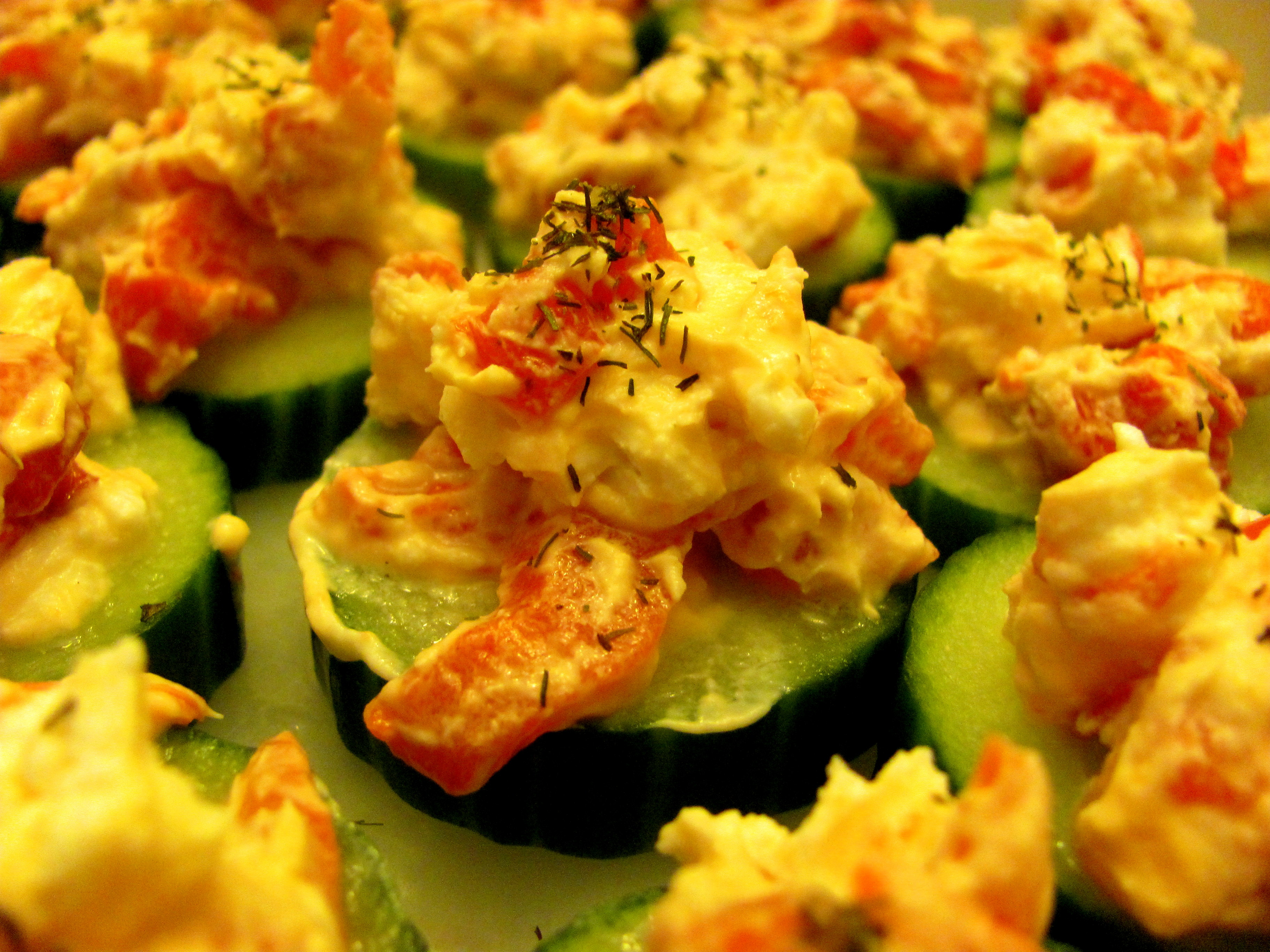
by Dr. Talia Marcheggiani, ND | Dec 17, 2012 | Canadian College of Naturopathic Medicine, Community, Cooking, Exams, Food, Food Sensitivities, Gluten Free, Holidays, Paleo, Recipes, Student

For the last Monday of classes for the 2012 school year we had a cleverly named “Ugly Potluck and Delicious Sweater” party at CCNM. Much fun (and good treats) were had by all and people did wear quite delicious sweaters, including some homemade masterpieces featuring Christmas trees that actually lit up via a battery pack. Celtic Christmas songs droned on in the background and it was a nice study “break” to foster school spirit and a sense of community before the real heat of exams set in and then we all disperse for the holidays.
(more…)
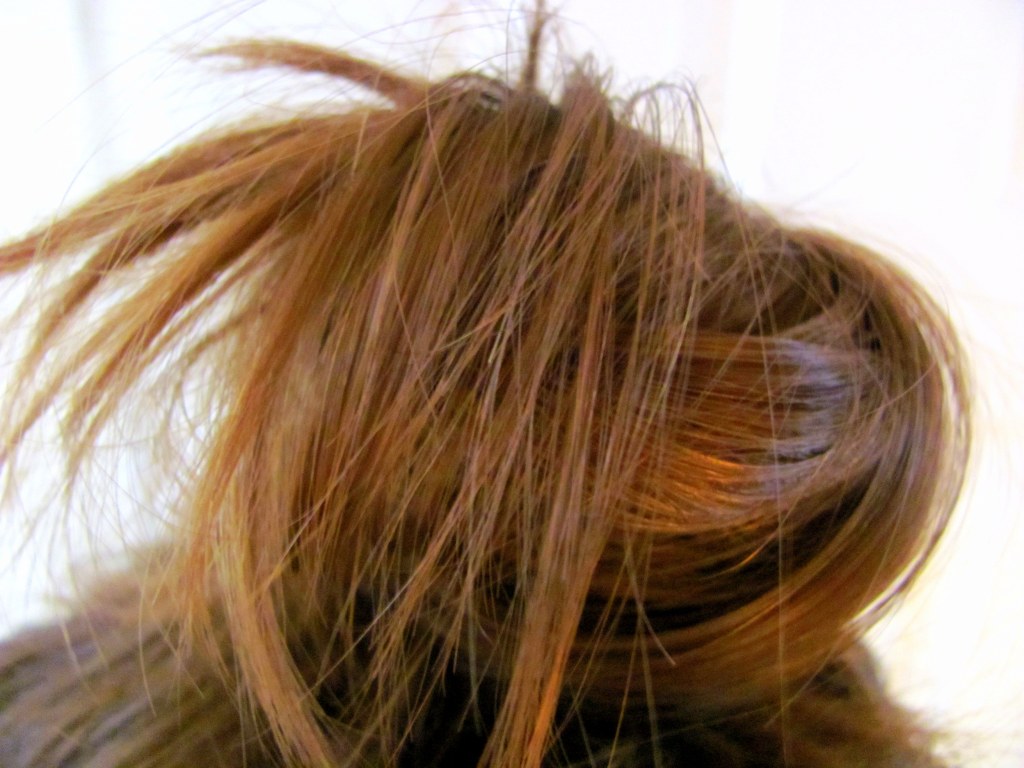
by Dr. Talia Marcheggiani, ND | Dec 14, 2012 | Beauty, DIY, Exams, Hair, Health, Home Remedies, Self-care, Stress, Student

Since puberty I’ve had fine, oil-prone hair that used to require daily washing. However, washing hair on a daily basis can be time-consuming and expensive. It’s also not recommended that we wash hair often (it’s better to cut shampoos down to once or twice a week) to avoid stripping our scalp and hair of their moisturizing, natural oils. If I don’t wash my hair often, however, my head becomes a limp, dull greasy mess that only looks partially presentable when pulled into a pony tail or buried under some kind of hat. Hence, the magic of: dry shampoo!
(more…)

 A singular narrative is told and retold regarding medicine in the west. The story goes roughly like this: the brightest students are accepted into medical schools where they learn—mainly through memorization—anatomy, physiology, pathology, diagnostics, microbiology, and the other “ologies” to do with the human physique. They then become doctors. These doctors then choose a specialty, often associated with a specific organ system (dermatology) or group of people (pediatrics), who they will concentrate their knowledge on. The majority of the study that these doctors undergo concerns itself with establishing a diagnosis, i.e.: producing a label, for the patient’s condition. Once a diagnosis has been established, selecting a treatment becomes standardized, outlined often in a cookbook-like approach through guidelines that have been established by fellow doctors and pharmaceutical research.
A singular narrative is told and retold regarding medicine in the west. The story goes roughly like this: the brightest students are accepted into medical schools where they learn—mainly through memorization—anatomy, physiology, pathology, diagnostics, microbiology, and the other “ologies” to do with the human physique. They then become doctors. These doctors then choose a specialty, often associated with a specific organ system (dermatology) or group of people (pediatrics), who they will concentrate their knowledge on. The majority of the study that these doctors undergo concerns itself with establishing a diagnosis, i.e.: producing a label, for the patient’s condition. Once a diagnosis has been established, selecting a treatment becomes standardized, outlined often in a cookbook-like approach through guidelines that have been established by fellow doctors and pharmaceutical research.














